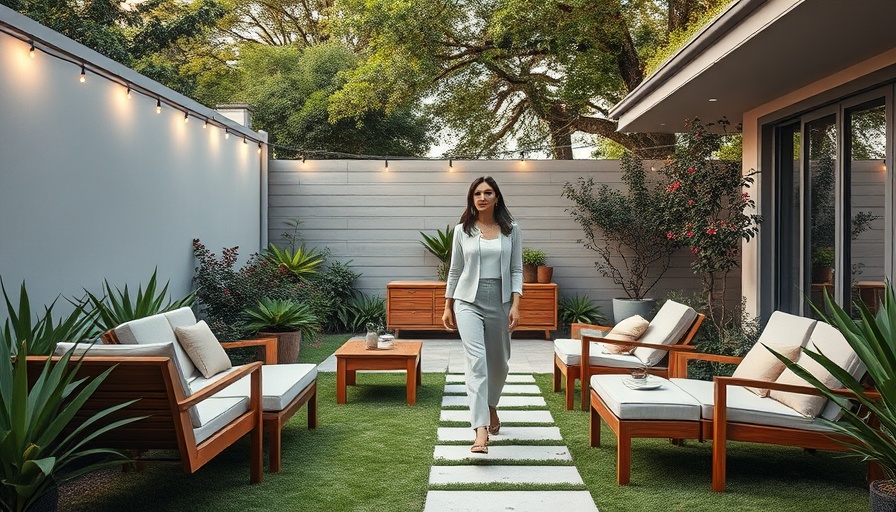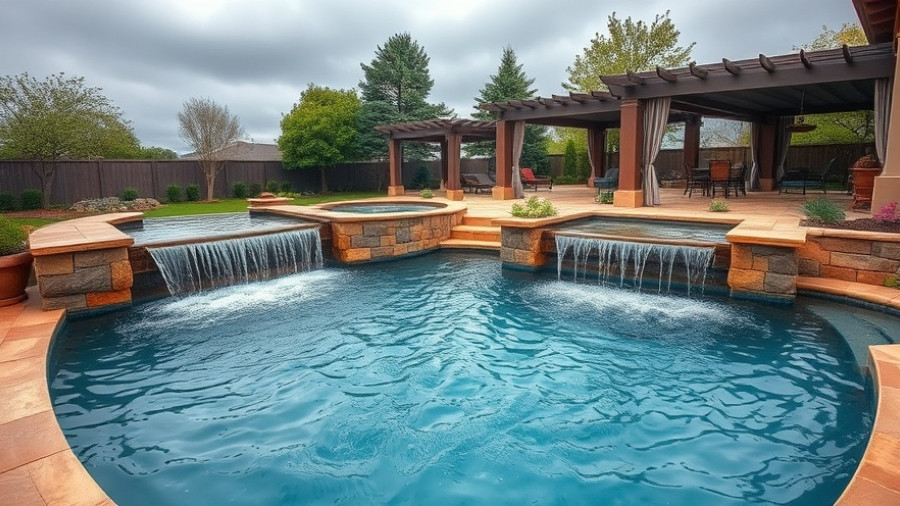
Transforming an Unusable Yard Into a Modern Oasis
When the family of a Ditmas Park home reached out to Dirt Queen NYC for a backyard redesign, their priorities shifted dramatically from a child-centered lawn to an elegant adult entertaining space. Gone were the days of a patchy lawn; now was the time for cozy dinner parties and social gatherings. As the family’s children grew older, they expressed a desire for a retreat that could transform their outdoor living space into a warm, inviting environment that also nurtured connections.
Envisioning the Layout: Garden Rooms and Pollinator Gardens
Co-founders Jarema Osofsky and Adam Bertulli began by surveying the obstacles posed by the existing landscapes—namely, three garage walls that encroached on the small area. They formulated a plan that wasn't just about aesthetics; it was about creating functional garden rooms amidst tightly packed boundaries. These distinct spaces were designed to embrace both adult enjoyment and the delicate ecosystem.
Two essential components were introduced: a vibrant pollinator garden that would support local wildlife and a cozy firepit area perfect for hosting relaxed gatherings, thus effectively marrying function with biodiversity.
Enhancing Curb Appeal: A Unified Color Scheme
One pivotal decision in the redesign involved a collaborative agreement with the neighbors: painting the backs of their garages in complementary hues. This not only created a visually pleasing backdrop but also fostered a sense of community and cohesion among neighboring homeowners, enhancing the overall visual appeal of the area.
Choosing Plants: Beauty Meets Sustainability
The plant selection was critical, stemming from a blend of aesthetic needs and ecological responsibility. Osofsky emphasized the use of native flowering shrubs and perennials. These plants, which include Clethra summersweet and oak-leaf hydrangeas, are not only beautiful throughout the seasons but also play critical roles in supporting local pollinators.
“You can turn even a small lawn into a rich habitat for pollinators and wildlife,” Osofsky explained. This philosophy reflects a broader trend in landscaping that prioritizes sustainability while delivering visual delight.
Dealing with Shadows: Functional Planting Techniques
The challenge of contrasting sunlit and shaded spaces was addressed through a strategic selection of shade-tolerant plants. Osofsky envisioned the shaded areas as a woodland escape, filled with ferns and other delicate flora that mimic natural forest transitions. This design approach not only maximizes the use of available light but also enriches the biodiversity of the garden.
Creating a Garden for All Seasons
The redesigned backyard in Ditmas Park serves as an exemplary model for homeowners seeking to utilize every inch of their outdoor spaces creatively. While the original yard was dull and underperforming, the new layout offers year-round enjoyment and visual appeal. By integrating pollinator-friendly plants and aesthetic designs, they have created a dynamic habitat that celebrates nature while providing a perfect sanctuary for family gatherings.
Why Your Backyard Deserves a Makeover
As families evolve and lifestyles change, outdoor spaces must adapt as well. Homeowners need to reflect on how they use their backyards and what changes can facilitate the kind of experiences they value.
This transformation story from Ditmas Park stands as a poignant reminder that through thoughtful planning and consideration of both function and ecology, any backyard can be revitalized into a vibrant extension of the home.
Are you ready to transform your own backyard? Understanding the core elements of landscaping design—functionality, community impact, and sustainability—can set you on the path to creating your very own outdoor oasis!
 Add Row
Add Row  Add
Add 




Write A Comment